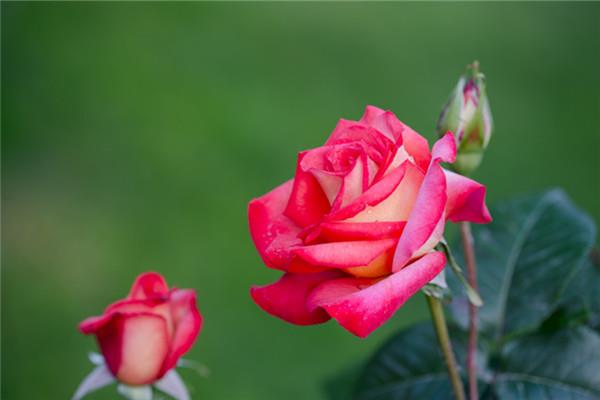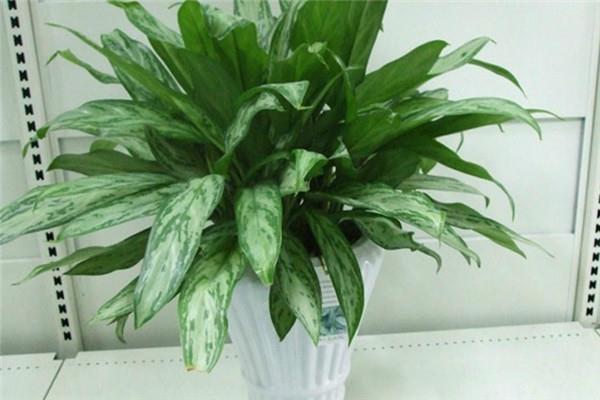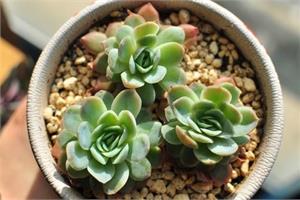What are the common indoor air purification plants that prevent pollution?
Many people will think that the indoor air must be better than the outdoor air. In fact, outdoor flowers have a good filtering effect on harmful substances in the air. So should we also raise some green plants indoors to purify the air? So what are the plants that purify the air indoors? Let's take a look at it.
[what are the plants that purify the air indoors]
1. Hanging orchid: the ability to absorb harmful chemicals in the air exceeds the air screening procedure. 1 pot of orchid, within 24 hours, can absorb indoor carbon monoxide, nitrogen peroxide and other volatile harmful gases.
2. Cactus: it is characterized by closing stomata during the day to prevent water evaporation. Open the stomata at night to absorb carbon dioxide and release oxygen. If you put two or three pots of cactus indoors, you can increase the negative ions in the air, which is greatly conducive to sleep and health.
3, tiger tail orchid: natural scavenger, one pot of tiger tail orchid can absorb more than 80% of harmful gases in the room of about 10 square meters, two pots of tiger tail orchid can basically completely purify the air in the general room; tiger tail orchid can also release a lot of oxygen during the day.
4. Aloe vera: the flower proverb says, "hanging orchid aloe vera is a strong hand, formaldehyde is scared to avoid." Evergreen aloe can absorb peculiar smell for a long time. In addition, aloe has a cosmetic effect.
Ivy: a pot of ivy can destroy 90% of benzene in a room of 8 to 10 square meters, deal with bacteria and other harmful substances brought back from outdoors, and even absorb dust that is difficult to absorb by vacuum cleaners.
6. Tequila: in a room of about 10 square meters, 70% benzene, 50% formaldehyde and 24% trichloroethylene can be eliminated.
7. Rose: it can absorb more harmful gases such as hydrogen chloride, hydrogen sulfide, phenol and ether.

8. Green pineapple: the high-efficiency air purifier in this creature is native to the Mexican plateau. Because it can purify benzene, trichloroethylene and formaldehyde in the air at the same time, it is very suitable to be placed in the newly decorated room. The new floor is only one of the sources of harmful substances.
9. Brazilian iron: Brazilian iron, also known as fragrant dragon blood tree, can remove harmful substances from the air.
10. Gold: absorbing carbon dioxide and releasing oxygen day and night. And easy to survive.
11. Osmanthus fragrans: it can remove harmful substances from the air. The volatile oil produced has significant bactericidal effect.
12. Fortune tree: release oxygen and absorb carbon dioxide; suitable for warm, humid and well-ventilated environment, Xiyang is also resistant to shade and convenient for management and maintenance.
13. Silver Queen: it is famous for its unique air purification ability: the higher the concentration of pollutants in the air, the more it can exert its purification ability! Therefore, it is very suitable for dark rooms with poor ventilation.

14. Dryopteris: it absorbs about 20 micrograms of formaldehyde per hour, so it is considered to be the most effective biological purifier. People who deal with paint or paint all day long, or people who like smoking around them, should put at least one pot of ferns in the workplace. In addition, it can also inhibit the release of xylene and toluene from computer monitors and printers.
15. Duck foot wood: bring fresh air to smoking families. Leaves can absorb nicotine and other harmful substances from the smoky air and convert them into harmless plant-owned substances through photosynthesis. In addition, it can reduce formaldehyde concentration by about 9 milligrams per hour.
[what are the anti-pollution plants]
1. Plants that can absorb harmful gases from household electrical appliances, plastic products, etc.
Iron tree, chrysanthemum, kumquat, pomegranate, purple jasmine, half lotus, rose, camellia, Milan, daisy, wax plum, marigold, can absorb harmful gases from household appliances and plastic products.
2. It can absorb harmful gases emitted by decoration, etc.
(1) plants that absorb formaldehyde: aloe, hanging orchid, tiger tail orchid, one-leaf orchid, tortoise back bamboo, natural scavenger. Studies have shown that aloe, tiger tail orchid and hanging orchid have a strong ability to absorb indoor harmful gas formaldehyde.
(2) eliminate xylene: Ivy, iron tree, chrysanthemum and so on.
(4) effectively remove the pollution of trifluoroethylene: daisy, evergreen: daisy, also known as longevity chrysanthemum, spring chrysanthemum, small elegant chrysanthemum, glass chrysanthemum, Malan head flower and so on.
(5) plants that absorb benzene: "Chrysanthemum iron tree grows vine, can absorb benzene clean", these three kinds of flowers, all have the ability to absorb benzene, can reduce benzene pollution.
3. Absorb carbon dioxide
Tortoise-backed bamboo has a strong characteristic of absorbing carbon dioxide at night, which is more than 6 times higher than that of other flowers.
4. Increase negative ions
People will feel suffocated in a stuffy room, not because of the lack of oxygen in the room, but because of a shortage of negative oxygen ions. When there is a TV or computer in the room, the negative oxygen ions will decrease rapidly. Cactus, lotus, cactus finger, epiphyllum, cypress, Platycladus orientalis and Cryptomeria fortunei can increase negative ions. Because the stomata on the succulent stems of these plants are closed during the day and open at night, they release oxygen while absorbing carbon dioxide, increasing the concentration of negative ions in the indoor air.
5. Plants that absorb odors
Green pineapple has strong entanglement and developed air root, which can not only be attached to the column tied with brown, placed in the foyer and hotel, but also can be cultivated into a hanging shape in the study and windowsill, which is a kind of flower which is more suitable for indoor display.
If you want to know more about it, you can continue to follow the No.1 Home Network.
Put in the foyer, hotel, can also be cultivated into a hanging shape in the study, windowsill, is a more suitable for indoor display of flowers.
If you want to know more about it, you can continue to follow the No.1 Home Network.
Related
- Wuhan Hospital Iron Tree Blooming Result Was Instantly Frightened by the Gardener Master
- Which variety of camellia is the most fragrant and best? Which one do you like best?
- What is the small blue coat, the breeding methods and matters needing attention of the succulent plant
- Dormancy time and maintenance management of succulent plants during dormancy
- Minas succulent how to raise, Minas succulent plant pictures
- What are the varieties of winter succulent plants
- How to raise succulent plants in twelve rolls? let's take a look at some experience of breeding twelve rolls.
- Attention should be paid to water control for succulent plants during dormant period (winter and summer)
- Watering experience of twelve rolls of succulent plants
- Techniques for fertilizing succulent plants. An article will let you know how to fertilize succulent plants.



